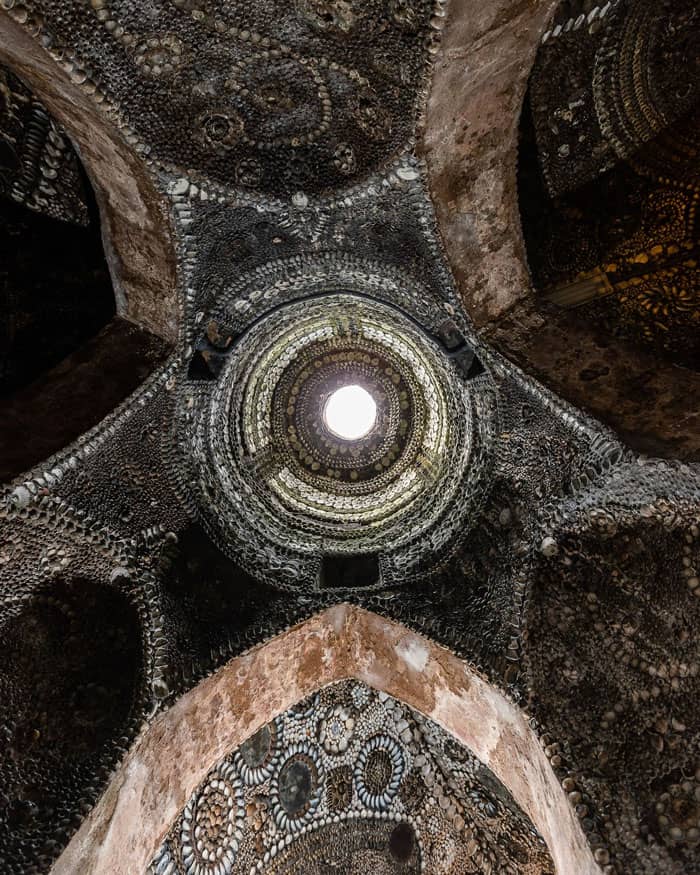The world is full of unsolved mysteries. Codes, puzzles, and cryptic public art tease us with their intrigue, and have left some of our most revered historians, cleverest cryptographers, and most determined treasure hunters, completely baffled.
A mysterious underground grotto encrusted in 4.6 million seashells has got people wondering. While some speculate it was once a smugglers’ hideout, others think it might have been an ancient pagan temple, but nobody has a clue who built it.
RELATED:The first mention of the Shell Grotto appears in the Kentish Gazette in 1838, but carbon dating suggests it could date back as far as the 1500s
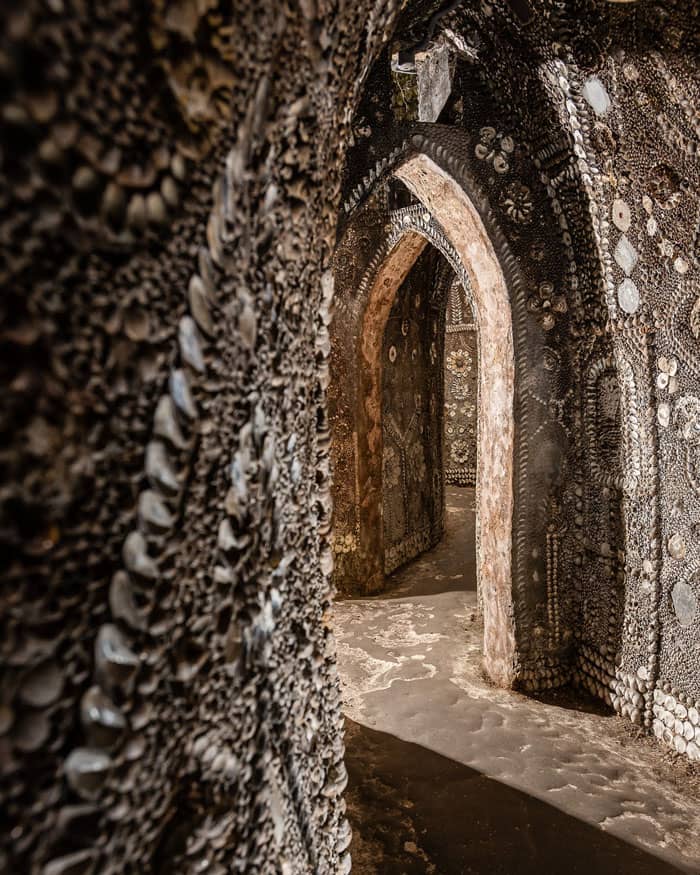
The 70-foot underground tunnel system, adorned with 4.6 million seashells, forms an intricate, 2,000-square-foot maze of mosaics and symbols
While there’s a lot we know about human history, there’s also so much waiting to be unearthed. One of the most captivating and mysterious discoveries is the Shell Grotto, discovered in 1835 below a backyard in Margate, England. The 70-foot underground tunnel system, encrusted with 4.6 million seashells, forms a complex, 2,000-square-foot maze of intricate symbols and mosaics, but its creators remain a mystery to this day.
The Shell Grotto was first mentioned in the Kentish Gazette on May 22, 1838, when it was declared it would soon be open to the public. According to the report, a certain James Newlove, who’d recently purchased Belle Vue Cottage, was making some alterations when workers struck a large stone. Upon further investigation, they were bewildered to find an astonishing underground grotto.
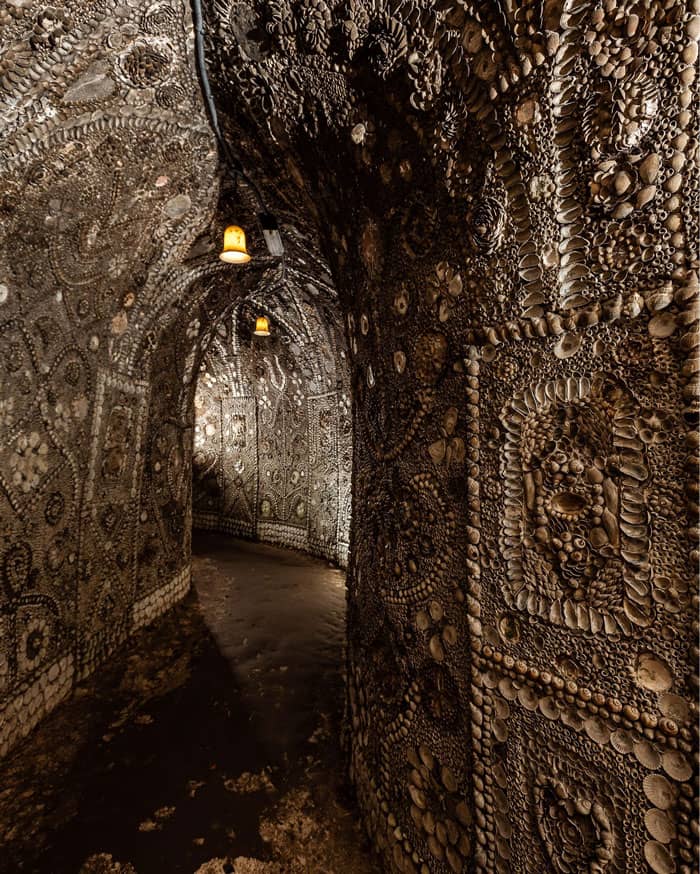
In Britain, decorative shell structures were popular in the 1700s, often built for aesthetic rather than practical purposes
Years later, however, Newlove’s daughter, Frances, said her brother stumbled upon the grotto “before anyone else knew about it,” possibly as early as 1835, via a chalky North Passage. In a letter, Frances details slyly slipping into the grotto with her brother, some friends, and “a candle in a lantern round somebody’s neck.”
Some folks think the Shell Grotto was once a smugglers’ hideout, while others believe it could have been a pagan temple. Decorative shell structures were popular in 1700s Britain, often constructed for aesthetic rather than practical purposes. Many of these structures can still be spotted around the UK today. While the true role of Shell Grotto remains a mystery, carbon dating suggests the site could date back as far as the 1500s.
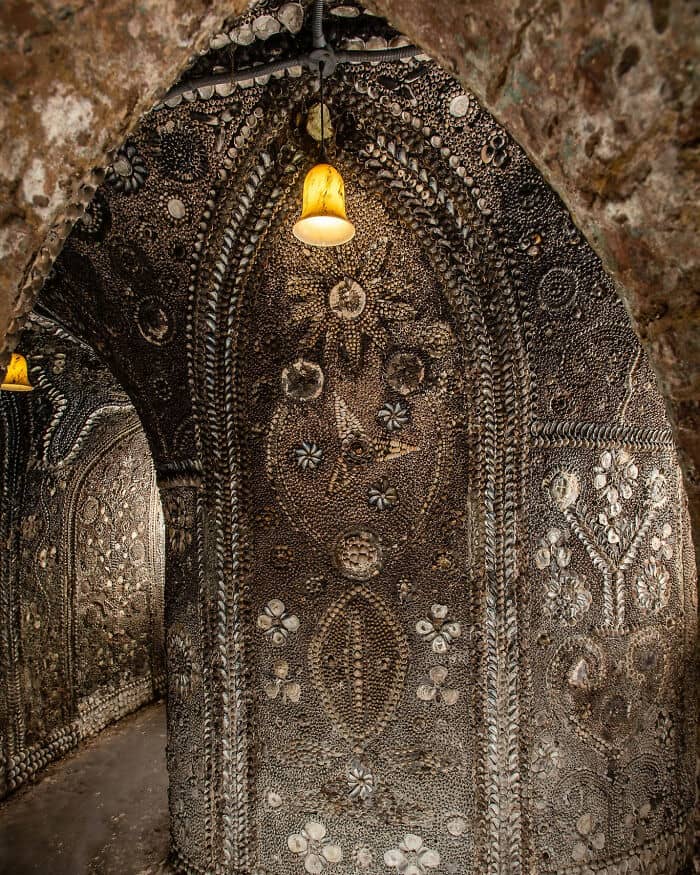
While nearly all of the 4.6 million shells are native to the British Isles, there are some areas where Caribbean queen conches are used, for example the “Altar Room.” The elaborate mosaic designs include floral patterns that might symbolize life, fertility, and growth, while19 stone hearts embedded among the shells are thought to symbolize love or connection.
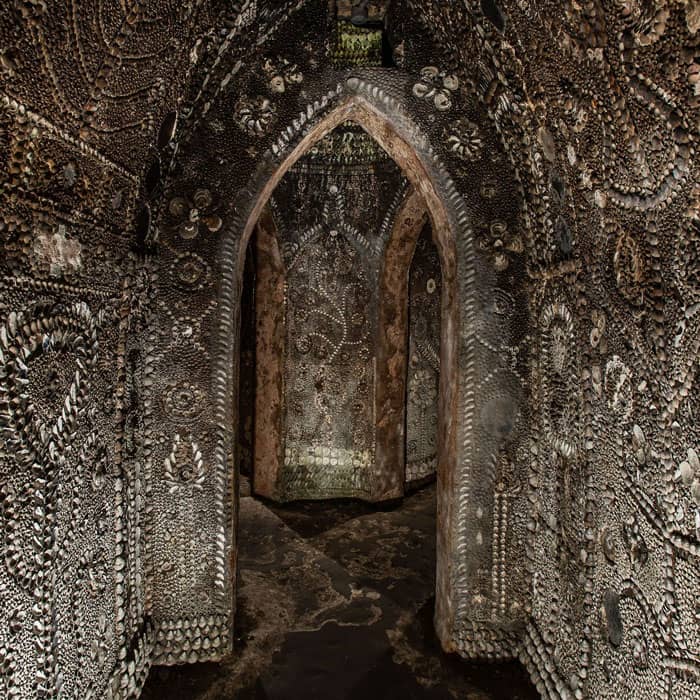
Some folks believe the mysterious grotto was once a smugglers’ hideout, while others think it might have been a pagan temple
These days the Shell Grotto is privately owned, and the owners entertain a theory that it was designed to track the sun, with the Dome acting as some sort of solar calendar.
“We don’t know if there’s any truth in that, but, some years ago, mirrors were strategically positioned around the grotto on the solstice, and when the sun came out it shone through the Dome at just the right angle to be reflected all the way down the Serpentine Passage, hitting the shrine in the Altar Room!”, they said on Instagram.
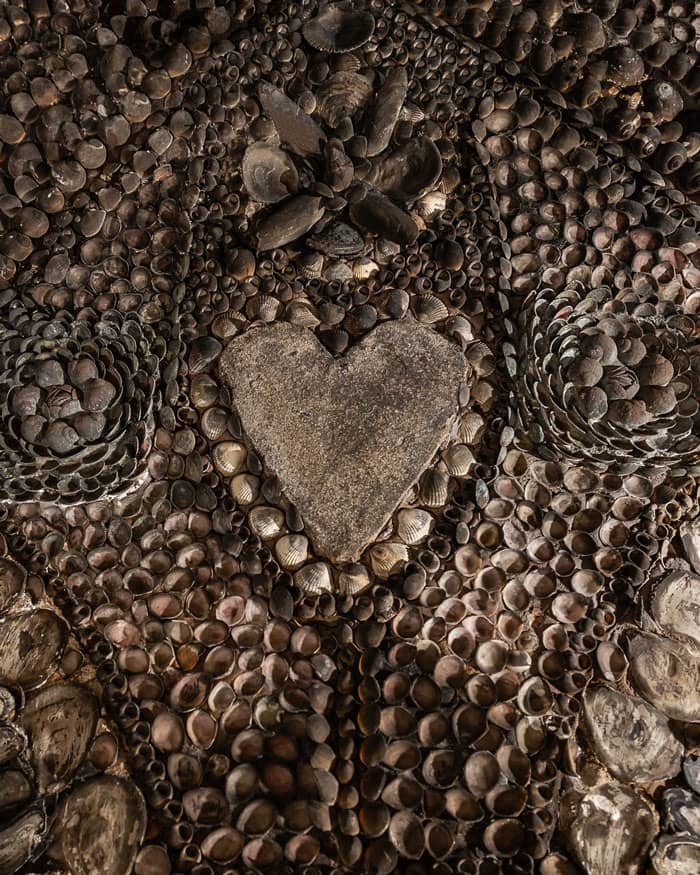
According to its website, the Grotto has provided a fascinating backdrop for photoshoots for magazines, newspapers and book covers and has hosted location filming for the BBC, Channel 4, ITV and many independent television companies. Today, this unique location is open to visitors, and the owners often host events there.
An independent trust committed to preserving and promoting the unique Grade I listed structure, The Friends of the Shell Grotto, was formed in 2008. While running independently to the Grotto, the Friends work closely with the owners and play an essential role in the life and work of the remarkable space.
Whatever its true origin, there’s no denying that the Shell Grotto is a truly fascinating fragment of human history
